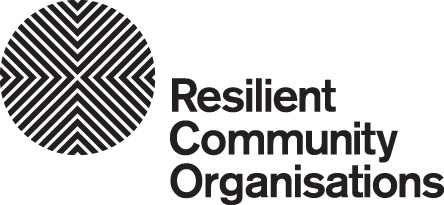Disasters operate as a kind of lens, allowing society to perceive what was before its eyes all along. The best way to prevent social disadvantage from becoming deadly during disasters is to eliminate the disadvantage, rather than merely focussing on the disaster situation. The social disadvantages our society treats as ordinary and unremarkable (can) become deadly in dramatic ways during the course of a disaster.
Disasters and Emergencies
Disasters and emergencies can arise from a range of events (or hazards):
- Floods, storm surges and tsunamis
- Heatwaves and bushfires
- Storms, hurricanes and cyclones
- Earthquakes and landslides
- Pandemics
- and more.
The two terms, disaster and emergency, are often used interchangeably. However, they do have two distinct meanings. Emergency Management Australia defines:
an emergency as "an event, actual or imminent, which endanger or threatens to endanger life, property or the environment, and which requires a significant and coordinated response."
a disaster as "a condition or situation of significant destruction, disruption and/or distress to a community."
Not every emergency will become a disaster. Rather, it is the interaction between the event itself (the flood, or fire, or pandemic), a community's exposure to that event and its level of vulnerability to the event that dictates whether the event will become disaster.
Sometimes unavoidable, catastrophic disasters will occur, for the most part, our choices and actions to prevent, prepare for, respond to and recover from an emergency will influence whether or not it becomes a disasters or how severe the disaster is.
It's up to all of us to stop emergencies from becoming disasters, including by building our preparedness for such events when they do occur.
Climate Change and Disasters
The Intergovernmental Panel on Climate Change (IPCC) has said that 2 degrees celcius of global warming above pre-industrial levels represents a global tipping point which, if exceeded, will result in severe, widespread and unavoidable conseqences. In Paris in 2015, 190 countries, including Australia, agreed to limit global warming to less that 2 degrees.
Australia is one of the most vulnerable developed countries to cliamte change impacts. Warming that exceeds 2 degrees will induce significant loss of species (including in the Great Barrier Reef), dangerous water shortages, severe damage to coastal infrastructure and communities, disruptions to agricultural and food production, and risks to human life and health from extreme weather events and disease outbreaks. [1]
Climate change will place further strain on Australia's water supply. Droughts are expected to become more frequent and severe in some parts of the country, with the CSIRO and Bureau of Meteorology projecting that rainfall could decrease by 20-30% in southern states by 2070. Resulting water shortages will render large areas of agricultural land unviable, with severe consequences for rural communities and food prices. [2]
In a world that exceeds 2 degrees of warming, Australia will endure more frequent and intense extreme weather events, including heatwaves. Globally, 2015 was the hottest year on record, and in Australia eight of our hottest summers have occurred in the last 15 years. This increases the risk of heatwaves and of bushfires. More Australians die each year during heatwaves than any other natural disaster, with older people, children and people with chronic health conditions or experiencing poverty at greatest risk [3]. The human and social toll of such events is hard to predict and quantify. Nonetheless report by the Commonwealth Senate in 2013 stated that:
“it is predicted that Australia will experience more heat waves, extreme fire weather, severe storms, and drought across southern parts of the continent. Some of the health effects accompanying these changes will be direct, such as increases in mortality and morbidity associated with heat waves. Other health impacts will be indirect, including damage to health infrastructure, depression and post-traumatic stress disorder, increasing health inequities, and an erosion of the social determinants of good health. When estimating the overall financial costs associated with extreme weather events, it is imperative that consideration is given to the significant costs arising from health impacts."
Impacts on People Experiencing Poverty and Disadvantage
There is a growing body of literature identifying the particular ways that climate change will impact on people experiencing poverty and disadvantage in developed countries. This literature identifies that the following groups will be first and worst affected by the full spectrum of climate change impacts including: increasingly frequent and intense extreme weather events, reduced air and water quality, vector, food and water-borne diseases, and increasing costs for essential goods and services caused by impacts to food supplies, utilities and infrastructure:
- People on low incomes and people who are unemployed
- People who are homeless or living in poor quality housing or the private rental market
- Frail older people and those with chronic health conditions
- Aboriginal and Torres Strait Islander people
- Single parents
- Newly arrived migrants and refugees
- People with a disability and their carers
- Residents of places where extreme weather events such as cyclones, bushfires, storms and storm surges are likely to be more frequent or intense and
- Rural communities and farmers exposed to more frequent droughts and floods.
This is because people living on low incomes, or who experience other forms of disadvantage:
- Tend to live in areas more likely to be adversely affected by direct climate impacts and have far less ability to move or make other necessary adjustments to their living arrangements;
- Are often less able to introduce measures to reduce their exposure to rising costs such as energy and water efficiency; and
- Are less likely to have the financial capacity to invest in disaster preparedness products and services, such as insurance and preparedness kits.
Given the already growing disparity in household wealth in Australia [4], a key risk from climate change is worsening inequality as people on low incomes struggle to meet the rising costs associated with adaptation.
Community organisations need to step up to their role in building resilient communities and organisations in the face of disasters and emergencies so that these impacts can be minimised.





